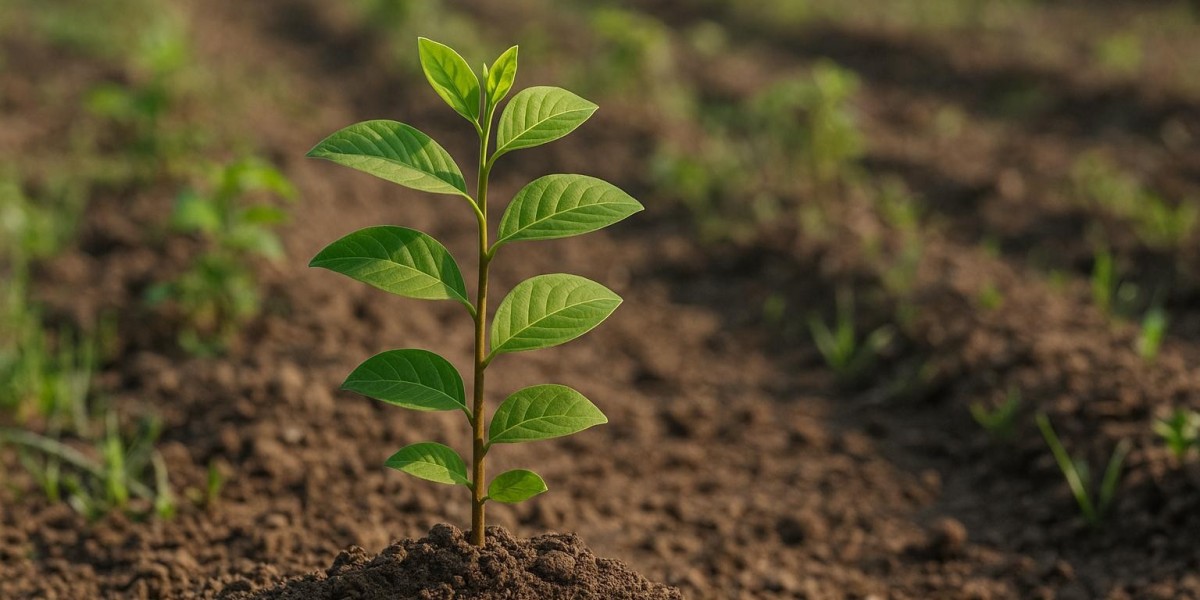Terminalia bellirica, the scientific name for the baheda, is a huge deciduous tree that is valued in Ayurvedic and traditional medicine. Its seeds, popularly known as baheda seeds, are valued for their role in herbal formulations, particularly in the renowned Triphala combination. Due to its ecological advantages and versatility, the tree is utilized for purposes beyond medicine in agroforestry. If the proper methods are used, growing baheda can be a profitable and sustainable option for farmers. To help farmers succeed, this guide provides comprehensive insights into soil requirements, sunshine needs, and efficient development tactics.
Why Consider Farming Baheda Seeds
Baheda trees can survive in a variety of conditions due to their resilience and long lifespan. They have several applications and can withstand drought. The active chemicals, oils, and tannins found in the seeds are sought after by the cosmetic, pharmaceutical, and herbal industries.
Farmers increasingly look at baheda cultivation as a viable alternative to conventional crops. According to market statistics, the global herbal supplement industry is projected to grow at a rate of nearly 7 percent annually, ensuring consistent demand for baheda-based products. For those starting out, it is essential to purchase Baheda Seeds from reputable suppliers to ensure high germination rates and high-quality produce.
Baheda supports sustainable farming and soil health improvement.
Long-term demand ensures a steady source of income for growers.
The Soil Requirements for Baheda Farming
Soil is the foundation of successful baheda cultivation. While the tree is adaptable, the quality of soil directly influences its growth rate and fruit yield.
Ideal Soil Conditions
Although it can withstand sandy and clay soils with the right care, baheda grows best in well-drained loamy soils. The tree prefers slightly acidic to neutral soil, with a pH range of 5.5 to 7.5. Although it can tolerate occasional flooding, it struggles to thrive in damp environments.
Farmers should analyze their soil before planting to determine its mineral composition, organic matter content, and moisture retention. Healthy germination and root establishment are promoted by enriching the soil with compost or organic manure prior to planting.
Soil Preparation Techniques
Before planting, the ground should be ploughed to improve aeration and break up compacted layers. Water stagnation can be avoided by preparing raised beds or pits. For young saplings, adding natural fertilisers such as vermicompost or farmyard manure to nutrient-deficient soils produces the perfect growing medium.
Sunlight Requirements for Healthy Growth
Like most large trees, baheda has specific sunlight needs that influence its vigor and medicinal quality.
Full Sunlight Preference
Baheda thrives in full sunlight. It requires at least 6 to 8 hours of direct sunlight daily for optimal growth. Shaded conditions slow down its development and may reduce seed quality. Farmers should avoid planting it too close to other tall trees that may block sunlight.
Climate Compatibility
The species is found in tropical and subtropical areas by nature. Although it can withstand temperatures as high as 40°C, it thrives in regions that are mild and have 1000–2000 mm of yearly rainfall. Baheda thrives when exposed to regular sunlight and moderate rainfall patterns, but it is hardy during dry seasons because of its robust taproot structure.
Germination and Early Growth Practices
Once the seeds are sown, the first few weeks are crucial for ensuring strong germination and healthy seedlings.
Seed Treatment and Sowing
Germination is slowed by the hard seed coat that many fresh baheda seeds have. Results are enhanced by pre-treatment techniques including soaking seeds in water for a full day or using sandpaper to scarify the coat. Plant the seeds in nursery beds or polythene bags 2 to 3 cm deep. When conditions are right, germination typically takes 15 to 25 days.
Transplanting Saplings
Seedlings are ready to be moved into the field after three to four months, when they are around thirty centimetres tall. Seedlings with robust root systems should be chosen by farmers. To promote early development, fill 45 x 45 x 45 cm planting trenches with a soil and compost mixture.
“Every seed planted is a promise to the soil, and every farmer who tends it is a custodian of tomorrow’s green heritage.”
Nurturing Baheda Trees for Sustainable Farming
Caring for baheda trees after transplantation ensures higher survival rates and better yields.
Watering Needs
Baheda trees are drought-resistant but require regular watering during the first two years after transplantation. Once established, they can survive on natural rainfall. Drip irrigation systems are effective in conserving water while ensuring steady moisture for young trees.
Fertilization
Organic fertilizers are highly recommended for baheda cultivation. Applying compost or green manure annually replenishes soil nutrients. In degraded soils, nitrogen and phosphorus supplements may be added to boost tree health and seed production.
Weed and Pest Management
Young saplings are in competition with weeds for moisture and nutrients. In the first year, regular weeding is essential. Although baheda is often pest-free, leaf-eating caterpillar infestations might happen occasionally. To safeguard their crops, farmers frequently apply neem oil or other natural insect control methods.
Harvesting and Yield of Baheda Seeds
Patience is required in baheda farming, as the tree matures slowly compared to short-term crops.
Harvest Timeline
Baheda trees start bearing fruits after 8 to 10 years of planting. Mature trees can produce seeds annually for decades. The fruits are collected when they turn brownish and dry, usually during late winter or early summer.
Post-Harvest Processing
Fruits are sun-dried to lower their moisture content after being collected. To maintain their quality, seeds are separated and kept in a cool, dry environment. For processing companies, appropriate storage preserves medicinal qualities and guarantees viability for the following growing season.
Expected Yield
A mature baheda tree can yield several kilograms of seeds annually, depending on environmental conditions and care. In well-managed plantations, farmers can expect consistent harvests that contribute to long-term profitability.
Baheda in Agroforestry and Sustainability
Baheda cultivation is not only profitable but also ecologically significant. Its deep roots help prevent soil erosion, and its broad canopy provides habitat for biodiversity. Farmers often integrate baheda in agroforestry systems with crops like pulses or medicinal herbs, creating diversified income sources.
Reports highlight that integrating trees like baheda into farmland can improve soil organic carbon by up to 25 percent, contributing to climate resilience. For broader insights into tree-based farming, the Food and Agriculture Organization offers valuable resources.
Challenges in Baheda Cultivation
The obstacles of baheda cultivation are similar to those of any farming endeavour.
If left untreated, seed germination rates may be low. Some farmers may be deterred by lengthy gestation periods before output. Profitability may be impacted by market swings, even when demand in the herbal sector is stable.
Effective planning, the application of seed treatment techniques, and integration with other crops for temporary revenue are necessary to overcome these obstacles. Government-backed agroforestry programmes that offer funding and technical assistance also help farmers.
FAQs
How long does it take for baheda trees to mature?
Baheda trees generally take 8 to 10 years to start producing seeds.Can baheda grow in dry regions?
Yes, baheda is drought-tolerant once established, though young trees require supplemental watering.What is the medicinal use of baheda seeds?
They are widely used in Ayurveda for respiratory health, digestive issues, and as part of the Triphala formulation.Do baheda trees need fertilizers?
While hardy, baheda benefits from annual applications of compost or organic manure to improve growth and yield.Can baheda be integrated with other crops?
Yes, baheda fits well in agroforestry systems, supporting soil health while allowing farmers to grow intercrops.
Farming Baheda with Vision
Growing Baheda seeds is a long-term investment in health, the environment, and financial stability rather than merely growing a tree. Farmers that cultivate baheda enhance their surroundings and support supply chains for herbal medicines. Growers can attain long-term success by knowing what the soil requires, making sure there is enough sunlight, and patiently caring for trees. Farmers engage in a cycle with every planting that guarantees the survival of the knowledge of historic medicinal traditions in the present era while also yielding financial benefits.








